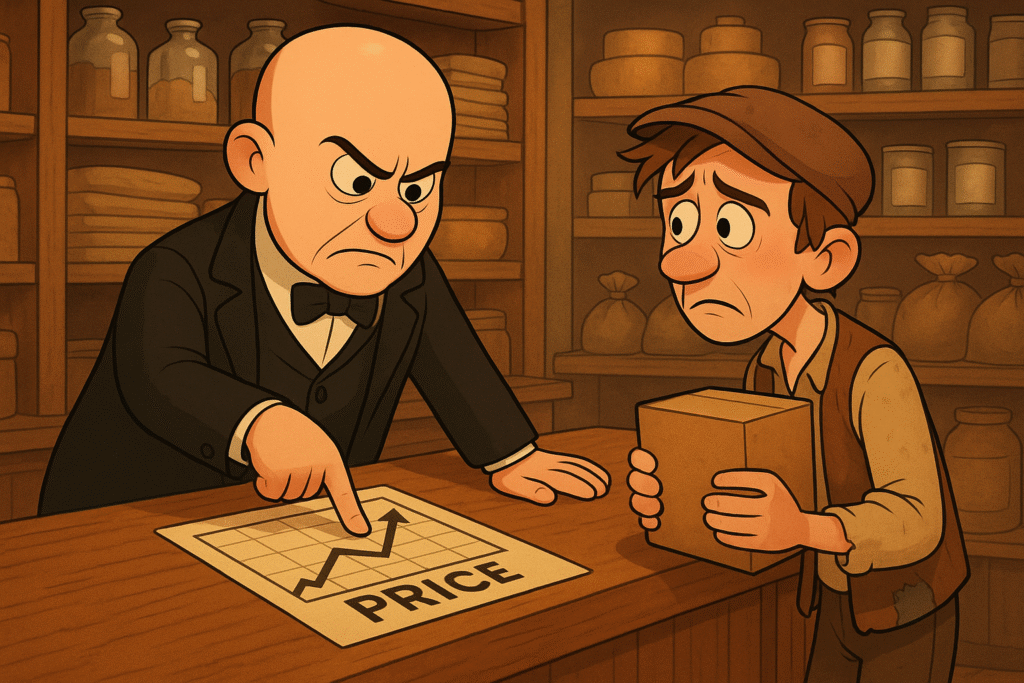
Longtime list member Carlos from Miami wrote me about a challenge many premium brands face:
“Amazon is driving us to lower our prices to stay competitive with knockoffs, but we’ve built our brand around premium positioning. If we cave to the downward pressure, we’ll destroy our margins and brand perception. Advertising on Amazon has become ridiculously expensive too. Have you seen companies successfully resist marketplace price pressure while maintaining their premium position?”
Carlos, you’re facing one of the most dangerous traps in modern commerce: letting a powerful platform like Amazon dictate your pricing strategy.
Here’s the brutal truth about Amazon’s marketplace dynamics — they profit regardless of whether you succeed or fail.
Every price cut you make to “stay competitive” feeds THEIR algorithm while eroding your brand equity.
Meanwhile, knockoff manufacturers can always go lower because they’re not investing in quality, innovation, or customer service. They just rip you off.
What makes this even more insidious is Amazon’s own house brands. Amazon Basics, Amazon Essentials, and dozens of other private labels use data from successful third-party sellers to create competing products at lower prices.
They’re actively competing using insights gathered from YOUR sales data.
It’s like renting a store from a landlord who studies your customers and then opens a discount version of your business next door.
You cannot win a race to the bottom against competitors who have no bottom.
The companies that successfully resist Amazon’s price pressure share a common strategy: they make their products difficult to compare on price alone.
Yeti coolers sell for 3-10 times the price of generic alternatives, even on Amazon, because they’ve created a cult of performance and durability that transcends simple feature comparison. Customers buy into an identity and community that cheap imitations can’t possibly replicate.
It takes devotion and a desire to be connected to your customer — things that Amazon largely blocks. So you need your owned channels to counterbalance the rented ones.
In I Need That, I discuss how the Fave Effect protects premium brands from commoditization. When customers view your product as their favorite rather than merely preferred, they’ll resist switching even when faced with significant price differences.
Product Payoff: Patagonia faced similar pressure from fast-fashion retailers and discount outdoor gear on various marketplaces. Instead of competing on price, they doubled down on their premium positioning by launching Worn Wear — a program that actually discourages new purchases by repairing old Patagonia gear.
This counterintuitive strategy reinforced Patagonia’s quality messaging while creating deeper customer loyalty. Participants in Worn Wear show 40% higher lifetime value and recommend Patagonia 60% more often than regular customers, proving that premium positioning can strengthen rather than weaken under marketplace pressure.
Action for today: Think hard about whether your Amazon strategy aligns with your brand positioning. If Amazon’s pressures conflict with your premium positioning, consider whether the platform’s volume justifies the brand damage.
Many successful premium brands have found greater profitability by redirecting Amazon marketing spend toward owned channels, partnerships with specialty retailers, or direct-to-consumer initiatives that support rather than undermine their pricing power.
Carlos, you’ve built something valuable — don’t let Amazon’s algorithms convince you it’s worth less than it is.
Have you successfully maintained premium positioning despite marketplace pressure? Tap that reply arrow and share your experience resisting the race to the bottom.
Or reach out to my team of product positioning specialists at Graphos Product.
